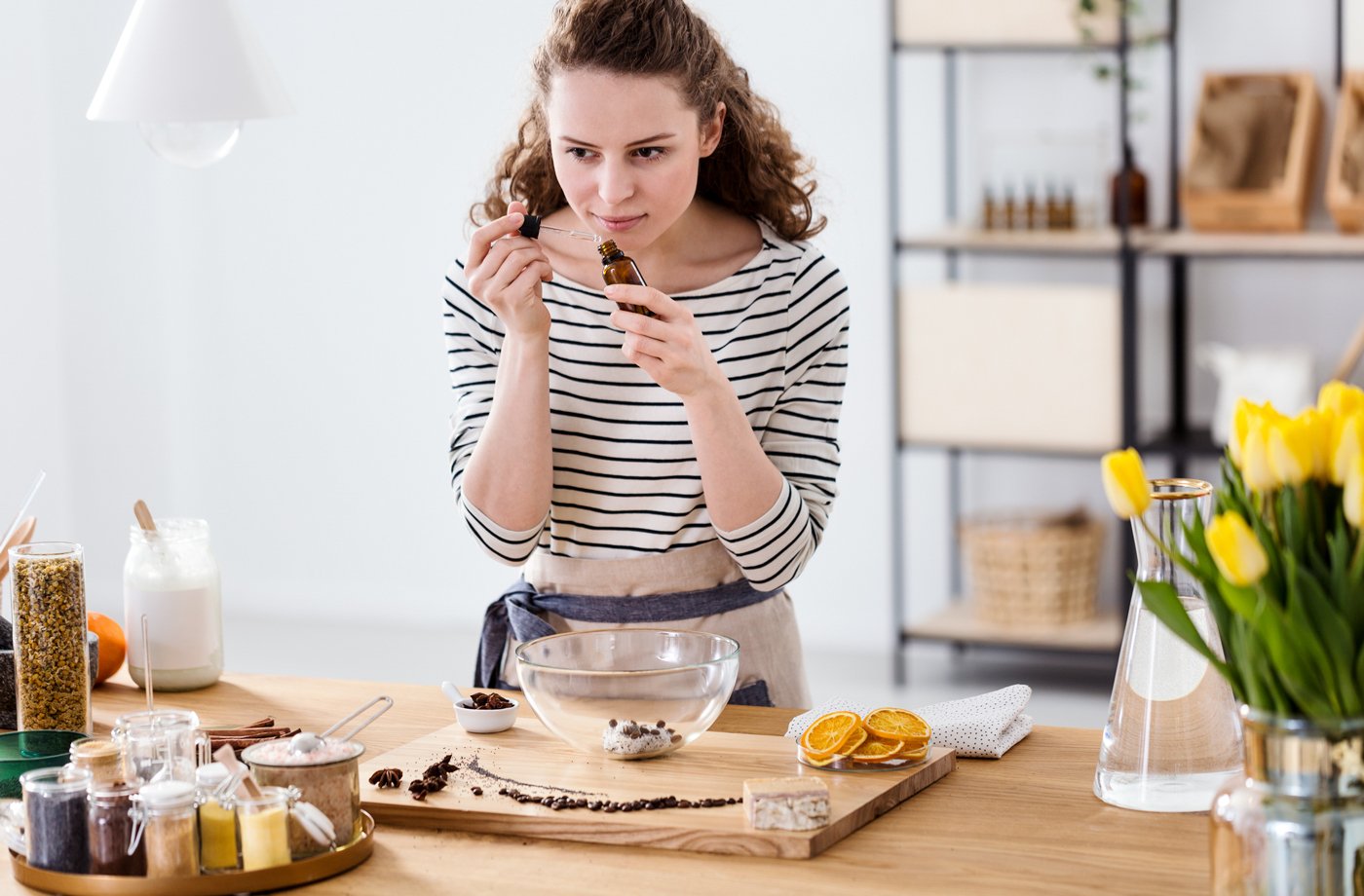The No-Fail Way to Make Your Own Essential Oil Spray
Essential oils like tamanu oil and eucalyptus oil are like the pocketknives of wellness tools, helping with everything from stress and anxiety and PMS, to serving as a non-toxic cleaning product. Sure, it's nice to have a few go-tos on hand in the form of a roll-on, but not every essential oil is safe to put on your skin (or ingest). One of the easiest and safest ways to use essential oils is by making a spray.
Even if your DIY abilities aren't going to win any Pinterest board awards anytime soon, this is one project anyone can master. It's super simple: All it takes is a little know-how, a bottle, water, and your essential oil (or oils if you want to get fancy) of choice. Keep reading for everything you need to know.
Here’s how to make essential oil spray in five easy steps.

1. Decide on the purpose of your essential spray
When making an essential oil spray, the first step is to decide what is the spray for. Here are some ideas to get your inspiration flowing:
- Improving sleep
- Insect repellent
- Room and fabric freshener or deodorizer
- Relieving depression
- Cleaning solution or disinfectant
- Body oil or perfume
- Hair detangler
- Balance hormones
Once you’ve decided why you want to make your spray and how you plan on using it, it’s time to choose your oils.
2. Research essential oil properties
Now you know why you want to make an essential oil spray, but how do you know which oils to use for the best effectiveness? When you're doing your research, make sure the sources you're using link to scientific studies backing up their claims. For example, if you're doing a deep dive into essential oils for anxiety, make sure the sites you're reading link out to sound evidence that their recommendations have merit.

{{post.sponsorText}}
Or, if you really want to increase your knowledge, delve into a book written by a respected holistic healer, such as Eric Zielinski, DC's The Healing Power of Essential Oils or Josh Axe, MD's Essential Oils: Ancient Medicine.
3. Experiment with scents
Now that you’ve discovered which essential oils you can use as a remedy, it’s important to make sure the scents work for you. Scent is tied so much to memory that it's very individualized. What's soothing to you might not be for someone else. Your research provides a strong base, but experimenting is key.
Much like perfumes, essential oil scents can be grouped by type, such as floral, citrus, spicy, woody, and herbal. Oils of the same type tend to blend well together.
You can also look up commercial products that achieve the effect you’re after and see what oils the pros blended together. You can use existing products as your guide to create different essential oil blends for yourself. But of course, everyone’s nose is different. One scent combination could send someone into ecstasy while leaving someone else wrinkling their nose in disgust. So you will have to do some experimenting to find out what smells good to you.
4. Decide on essential oil ratios
If you're an essential oil newbie, it's probably best to start with just one or two oils for your first spray. As you gain more confidence, experience, and you grow your collection of oils, you can experiment with using a variety of oils in one mixture.
As you blend different oils to discover what scent profile you want to achieve, start with a 1:1 ratio of different oils. See how that smells, and then adjust the scent profile and ratios from there. Typically, when making an essential oil blend, there will be one or two oils you use more of as your main scent. Other oils added are complimentary and in lesser ratios, depending on your scent preferences and the properties you’re after.
5. Make your spray
When choosing your spray bottle, glass may be a little pricier than plastic, but since essential oils can degrade plastic, it's worth the few extra bucks—especially if you'll be using the spray on your skin; you don't want any nasty chemicals from the plastic to make their way onto you.
To make a spray, mix your essential oils with purified or distilled water, which you can buy in the grocery store. The strength of the mixture is totally up to you. Depending on the size of your bottle, play with the number of drops of each essential oil and how much water you add. For a stronger scent, mix 2 oz. of water in your spray bottle with 15 to 25 drops of essential oils. For a milder scent, a good guideline is 20 drops of essential oil in 4 oz. of water.
You can add more water or oil to adjust your ratios up or down. Record how much water and how much of each oil you’ve added to the bottle to keep track. That way once you’ve nailed your recipe, you’ll be able to recreate it.
To use your spray, remember that oil and water don’t mix—shake well before each use.
Essential oils have so many natural benefits. Once you get started making and using your own essential oil sprays, you’ll be hooked on how easy it is to concoct your own remedies at home.
Loading More Posts...